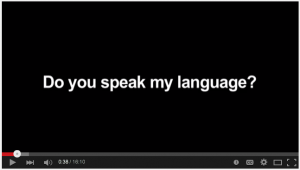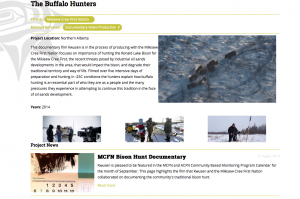As part of my travelogue of research on indigenous storytelling, I ventured into a related direction. Our module’s discussion of self-representation in media inspired me to explore distribution. After all, why tell a story if it can’t be shared? For Indigenous storytellers looking to share stories with wider audiences in Canada and internationally, what are the options? Who are potential distribution partners? Are Indigenous players in the arena? Which distributors support film media? Publishing? New media? Who is helping to develop and share spoken, artistic and printed stories and artwork?
I realized that many oral and dance traditions might be captured with screen-based media and fall into the documentary realm. Although sites such as Native Dance contain over 100 videos of footage and hundreds of images, providing a wealth of information on dance traditions from coast to coast in Canada, they do not lead to any dedicated distribution channel. So far, most astounding to me is typing in “Aboriginal Dance” on YouTube, which reveals a plethora of resources, a never-ending sea of videos uploaded by multiple users – so I credit YouTube as a valuable exhibitor, but not a dedicated one.
Here is a look at some of my key discoveries in the area of distribution:
(1) Indigenous Feature Film Production in Canada: A National and International Perspective
This is a major report published in October 2013, commissioned by the imagineNATIVE Film + Media Arts Festival (imagineNATIVE) whose mandate is “to foster and promote the Aboriginal film and media sector.” It was funded by the Ontario Media Development Corporation and Telefilm Canada. The report examines all aspects of Aboriginal feature film production in Canada, including funding and distribution, and makes recommendations for further development. The role of government-supported organizations in recognizing and including Indigenous cultures as part of Canada’s identity and cultural landscape appears to be essential to preservation and growth of this cultural industry sector.
(2) Indigenous Screen Office for Canada
(Almost) hot off the press! Announced on June 12, 2017 at Banff World Media Festival, Canada is about to get a new Indigenous Screen Office tasked with “supporting the development, production and marketing of Indigenous content.” This initiative is the result of a collaboration of key audiovisual industry organizations that include APTN, CBC Radio-Canada, the Canada Media Fund (Supporting and developing the Indigenous screen-based industry in Canada), the Canadian Media Producers Association, the National Film Board of Canada, Telefilm Canada, The Harold Greenberg Fund and VICE Studio Canada. What promising industry leadership!
(3) Isuma Distribution International Inc.
This was the only distributor I could locate so far of its kind. IsumaTV bills itself as “a collaborative multimedia platform for indigenous filmmakers and media organizations.” It is a project of Isuma Distribution International Inc., “Canada’s first media distribution company specializing in Inuit and Aboriginal films,” and works in coalition with a range of partners such as producers and non-profits.
Other major film distributors have been quoted as wishing to see more Indigenous stories, but I was unable to find many dedicated to Indigenous content. One that did stand out is the Winnipeg Film Group, with a dedicated Indigenous Filmmaker Catalogue. Other organizations such as the National Indigenous Media Arts Coalition support a range of development and funding activities, but within a network of partnerships.
(4) First Nations, Inuit, and Métis Publishers and Distributors
Turning to print-based media, the University of Toronto Libraries has published a guide of First Nations, Inuit, and Métis publishers and distributors across Canada. Its focus is on Indigenous-owned publishers, and academic and small presses that publish the work of Indigenous authors. According to the site, “particular effort is made to include publishers of Indigenous language materials. More detail is provided on publishers from Central Canada. While an effort has been made to select publishers working in a good way, this guide should not be understood as an endorsement of any publisher or publication.” Started in 2010 and last updated in 2016, contact information is provided to allow for more updates. The site also links to UBC’s Aboriginal Publishers, Distributors & News Media homepage.
(5) 11 Indigenous podcasts for your listening pleasure
Finally, new media outlets. New Journeys, a Canadian-based online Friendship Centre resource, published a list of podcasts in January 2017. Auditory and sometimes visual in nature (when in video format), podcasts provide new channels for content distribution across digital spaces. Cited on the list is Media Indigena, a weekly Indigenous current affairs podcast hosted by Rick Harp, who himself published An Index of Indigenous Podcasts in July 2016.
As with last time, I found many more relevant sites, but those fall slightly outside the scope of this discussion at this time. Now that I have taken an overview in Module One, and explored distribution in Module Two, my next step will be to narrow my focus to a more specific storytelling medium originating in Canada and research the development and implementation or distribution of such works within Canada and abroad.

